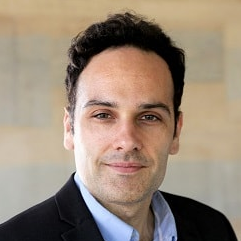Smart Sensing for Advanced Sleep Analysis
A special issue of Sensors (ISSN 1424-8220). This special issue belongs to the section "Intelligent Sensors".
Deadline for manuscript submissions: closed (31 July 2020) | Viewed by 14772
Special Issue Editors
Interests: Artificial Intelligence; Soft Computing; Machine/Deep Learning; Cognitive Neuroscience; Neuro-engineering; Neurobilogy; Industrial Informatics
Special Issues, Collections and Topics in MDPI journals
Interests: biomedical signal processing; machine learning and wearable sensing
Special Issues, Collections and Topics in MDPI journals
Special Issue Information
Dear Colleagues,
Human sleep monitoring is essential for the diagnosis and management of various sleep-related disorders. Wearable sensors can be used to measure physiological parameters to predict the occurrence of such disorders and assess the quality of sleep. In addition, they can be used to monitor, treat, and manage medical conditions related to sleep. The most common sleep abnormalities include obstructive sleep apnoea, upper airway resistance syndrome, periodic limb movement disorders, restless leg movement disorder, narcolepsy, rapid eye movement (REM), sleep behaviour, insomnia, dyssomnias, parasomnias, hypersomnia, nocturia, sleep stage detection and categorisation (wake, N1, N2, N3, and REM Sleep), circadian rhythm disorders and consciousness disorders.
Currently, the use of wearable sensors is limited to professional installation in a clinical setting. However, recent research has focused on transforming sleep monitoring systems to allow their use inside the home and as online and mobile modalities. This involves a reduction of the number of sensors used while still maintaining an acceptable level of accuracy.
This Special Issue will present novel methods for sleep monitoring applications including the use of various body-worn sensors such as smart watches, smart phones, and wearable EEGs. In particular, it will focus on methods incorporating advanced analytics techniques powered by the latest machine intelligence methods, such as deep learning or other new artificial intelligence paradigms, to identify various sleep stages, classify common body positions and unobtrusively estimate the respiratory rate.
Dr. Javier Andreu-Perez
Dr. Delaram Jarchi
Guest Editors
Manuscript Submission Information
Manuscripts should be submitted online at www.mdpi.com by registering and logging in to this website. Once you are registered, click here to go to the submission form. Manuscripts can be submitted until the deadline. All submissions that pass pre-check are peer-reviewed. Accepted papers will be published continuously in the journal (as soon as accepted) and will be listed together on the special issue website. Research articles, review articles as well as short communications are invited. For planned papers, a title and short abstract (about 100 words) can be sent to the Editorial Office for announcement on this website.
Submitted manuscripts should not have been published previously, nor be under consideration for publication elsewhere (except conference proceedings papers). All manuscripts are thoroughly refereed through a single-blind peer-review process. A guide for authors and other relevant information for submission of manuscripts is available on the Instructions for Authors page. Sensors is an international peer-reviewed open access semimonthly journal published by MDPI.
Please visit the Instructions for Authors page before submitting a manuscript. The Article Processing Charge (APC) for publication in this open access journal is 2600 CHF (Swiss Francs). Submitted papers should be well formatted and use good English. Authors may use MDPI's English editing service prior to publication or during author revisions.







